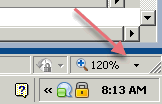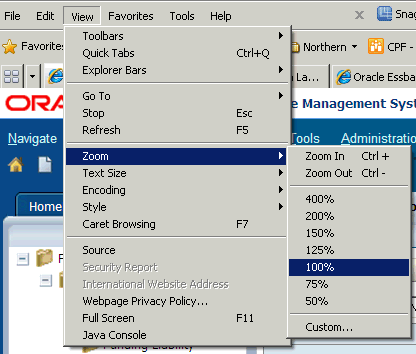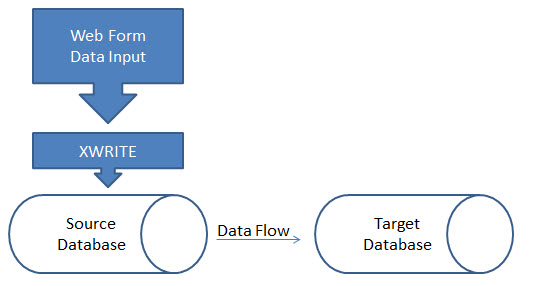A Primer for Master Data Management in Finance Organizations
Part I
Overview
You can only improve what you can measure. That popular business maxim, like many others today, is highly dependent upon data. What’s more it can’t be just any data. Quality decisions require “Quality” data that is timely and reliable. Moreover, executives must understand what should be measured, how those measurements are obtained and much more in order to correlate all the data necessary for accurate decision making. After all, that’s the objective, right? Making better decisions faster?
Unfortunately, in many organizations today managers struggle to address some basic building blocks. They often have as much success evaluating information as the proverbial blind men touching an elephant.
You know how the story goes: the one holding onto the tail thinks he’s got a rope in his hands; the one standing next to a leg thinks it’s a tree; and the guy holding onto the snout is pretty sure the company is selling hoses. Focusing on a subset of available data without the bigger picture in mind can lead to faulty assumptions, poor decisions and inaccurate predictions.
This article provides a summary of the key aspects of Master Data Management (MDM), and clarifies its emerging practice and uses to focus on challenges faced by the Finance Organization of an enterprise.
The Challenge
In today’s constantly evolving enterprise, complex systems are designed to accommodate the needs and emphasis of the individual business units, thereby creating enterprise silos of data presented in different formats and often resulting in contradictory numbers. The ability to measure corporate progress again KPIs requires adding even more complexity when the information accuracy is tested through repetitive checkpoints and validations, often using manual processes. And the more manual the process, the less likely it is that business rules are enforcing standardization insuring consistent usage. Decentralized approaches to data management typically impact the reliability of the data, leading to extended reporting cycles and decision making based on questionable or faulty data, ultimately impacting the company’s risk profile and bottom line.
Gartner predicts that a lack of information, processes and tools will result in more than 35% of the top 5,000 global companies failing to make insightful decisions about significant changes in their business and markets.
“Gartner Reveals Five Business Intelligence Predictions for 2009 and Beyond,” Gartner Inc., January 2009
This leads to an inherent misunderstanding of, and distrust in, the reports used by management to drive key business decisions. This problem is exacerbated by the need to comply with various regulatory standards, such as SOX, Basel II, Dodd-Frank and IFRS. All too often executives sign reports and filings that are not completely accurate.
Is there a better way?
The past decade has seen the rise of new concepts, processes and tools to help the enterprise deal with the various challenges of dealing with data quality and information reliability. In most organizations, the operational business systems rely on one or more sets of data including a Customer Master, an Item Master and an Account Master. Product Masters are also prevalent in many industries.
By adopting a Master Data Management (MDM) strategy, you can create a unified view of such data across multiple sources. When you combine MDM methodology with strong analytical capabilities, you’re able to derive true value from islands of data.
MDM Defined
- There is a lot of confusion around what master data is and how it is qualified. There are five common types of data in corporations:
Unstructured—This is data found in e-mail, white papers like this, magazine articles, corporate intranet portals, product specifications, marketing collateral, and PDF files.
- Transactional—This is data related to the operational systems such as sales, deliveries, invoices, trouble tickets, claims, and other monetary and non-monetary interactions.
- Hierarchical—Hierarchical data stores the relationships between pieces of data. It may be stored as part of an accounting system or separately as descriptions of real-world relationships, such as company organizational structures or product lines. Hierarchical data is sometimes considered a super MDM domain, because it is critical to understanding and sometimes discovering the relationships between master data.
- Master—Master data relates to the critical nouns of a business and falls generally into four groupings: people, things, places, and concepts. Further categorizations within those groupings are called subject areas, domain areas, or entity types. For example, within people, there are customer, employee, and salesperson. Within things, there are product, part, store, and asset. The requirements, life cycle, and CRUD cycle for a product in the Consumer Packaged Goods (CPG) sector is likely very different from those of the clothing industry. The granularity of domains is essentially determined by the magnitude of differences between the attributes of the entities within them.
- Metadata—This is “data” about other data and may reside in a formal repository or in various other forms such as XML documents, report definitions, column descriptions in a database, log files, connections, and configuration files.
“The What, Why, and How of Master Data Management,” by Roger Wolter and Kirk Haselden, Microsoft Corporation
Let’s be very clear. “MDM” is a comprehensive business strategy to build and maintain a single, dependable and accurate index of corporate data assets and is not just a tool. It includes technology-assisted governance of the master data and interfaces with operational and analytical systems. So, MDM is not a technology application in and of itself. MDM is a set of business and governance processes all supported by a dedicated technology infrastructure. The technology exists to support the overall MDM environment, not the other way around. But in order to accomplish that, the first order of business must be to gain a complete understanding of how business processes work cross-functionally within the organization
The shifting landscape of Financial MDM
When is MDM not MDM? When it’s Financial MDM.
“Myths of MDM,” Gartner, January 2011
Traditionally, MDM could be divided into two discrete worlds – Operational and Analytical. Andrew White, research vice president at Gartner, distinguishes the two.1 He notes that Operational MDM places an emphasis on process integrity and data quality “upstream” in core business applications. Operational instances deal with sales regions, territories, products, etc. Traditionally, Finance MDM − mastering hierarchy and ledger/account data for use in “downstream” or reporting systems − has been equated to “Analytical MDM.” Here financial users conduct forward-looking analyses – what if an acquisition occurs, what factors impact my goods production, etc.
Operational MDM
Any enterprise requires significant amounts of data to operate under current conditions and to plan for the future. Organizations gather petabytes of information regarding sales, customer service, manufacturing and more. A key component of Operational MDM is transactional data – time, place, price, payment method, discounts, etc. Operational MDM supports day-to-day activities of an organization, but can’t deliver insights to guide decision making.
Analytical MDM
An enterprise uses Analytical MDM to make overarching evaluations and forward-looking decisions. Analytical MDM processes utilize information such as customer demographics and buying patterns. Large data warehouses enable comprehensive data aggregation and queries and applying Analytical MDM delivers insights critical to planning for the future. The value derived to the business is directly dependent on the quality of that operational data.
The trouble as White pointed out, is that some applications used in financial organizations operate on transactions published from operational systems and actually behave like business applications. The example given by White is a corporate reporting function that initially harmonizes disparate master data for global/corporate reporting that then must author its own versions (or views) of the same hierarchy and master data. As such, this application is no longer purely “downstream” or “Analytical MDM” because the data now has to be governed much as other application- specific information is authored. It gets even more confusing as the newly-authored hierarchy is shared and re-used across the organization and operational side of the business with each individual business unit spinning their own tale from the same set of data. Trying to bring order to this environment creates the need to govern the new data as if it were re-usable master data, not application-specific data.
Financial organizations gain business value by applying and using MDM programs that incorporate both Operational and Analytical data. The cleansing of operational data gives decision makers a clear picture of current state. Programs that cleanly master operational data enrich analytical capabilities. Both are dependent upon the other.
And so a fresh perspective on the role of MDM in the Finance Organization should consider the blurring line between Operational MDM and Analytical MDM. Financial MDM must encompass both models. To ensure an organization meets business demands, it must develop a sound strategy to proactively manage master data across operational and analytical systems.
The journey to reliable, quality financial data
There are technological, organizational, cultural, political, and procedural challenges involved in developing a Financial MDM program for any organization. Any of these can undermine the effort. Further complicating these projects are staff, including executives − maybe even the CFO − who have vested interests in ensuring their particular version of the truth prevails, regardless of the actual data.
A sound Financial MDM strategy should first consider the process, and then the supporting tools and technologies. When built upon a firm foundation of process, technology takes its proper place as an enabler and a facilitator. The three critical building blocks of a Financial MDM strategy are:
- Data Governance. A set of processes that define how data is handled and controlled throughout the organization. These processes and procedures are in place to ensure all persons in the organization understand what the data assets are, how they are defined and maintained, and the methods to be used to affect changes to these artifacts.
- Data Stewardship. A group of individuals who will oversee the data governance of the key data of the organization. The data stewards are ultimately tasked with ensuring the data elements are correct, unaffected by outside forces and maintained in accordance with the approved and understood procedures.
- Data Quality. A metadata management tool is a technological means to ensure the metadata elements are maintained in an orderly process and under a strict set of enforced business rules. It is important to understand that the technology is only a means to enforce the business policies and rules agreed to by the organization. A tool is not MDM in and of itself; but rather it is only one component of the solution. The tool selected should support the creation, modification, and validation of all data relationships and reporting structures for the entire enterprise.
Just keep in mind, all three components are required, and no one component is more important than the others.
The promise of Financial MDM
The journey toward a robust Financial MDM solution is worth the undertaking. The benefits of implementing and using Financial MDM practices are numerous:
- Companies adopting a Financial MDM strategy are able to increase productivity across business units by 30% to 50%.
- Financial MDM strategies create operational efficiencies by eliminating duplicative and redundant processes.
- Financial MDM strategies reduce risk by improving removing “hidden silos” and creating total visibility − “who is doing what” − as well as improving data quality and reliability that impacts regulatory compliance.
Examples of the benefits of Financial MDM
- Banks and insurance companies find data and merger consolidation for regulatory reporting makes mergers and acquisitions a seamless and efficient process.
- A major investment company slashed month-end reporting time by eliminating the manual processes required to manipulate data from over 20 spreadsheets.
- A Defense contractor qualified for bulk-purchase national rates by consolidating divisional data to find duplicate purchase patterns.
- A data services device provider reduced change control that had previously required 3 to 4 months to a matter of just days.
When you combine an MDM methodology with a strong analytical set of capabilities, it results in a strategic organizational infrastructure that provides the means to seamlessly derive true value by bridging the many islands of data. It becomes Financial MDM — a natural extension of business processes created by a company’s desire to achieve a competitive advantage by insuring data quality to unlock key performance indicators.
In the next installment:
Part II of this White Paper will delve further into the two key aspects of Financial MDM: Operational and Analytical Uses and Drivers.
FOOTNOTES:
- “When MDM isn’t MDM? In Finance of course, well sometimes…,” by Andrew White, Mar. 1, 2010, Gartner
- “Version of the Truth — Master Data Management” The Big Fat Finance Blog by Alan Radding, Oct. 27, 2011







